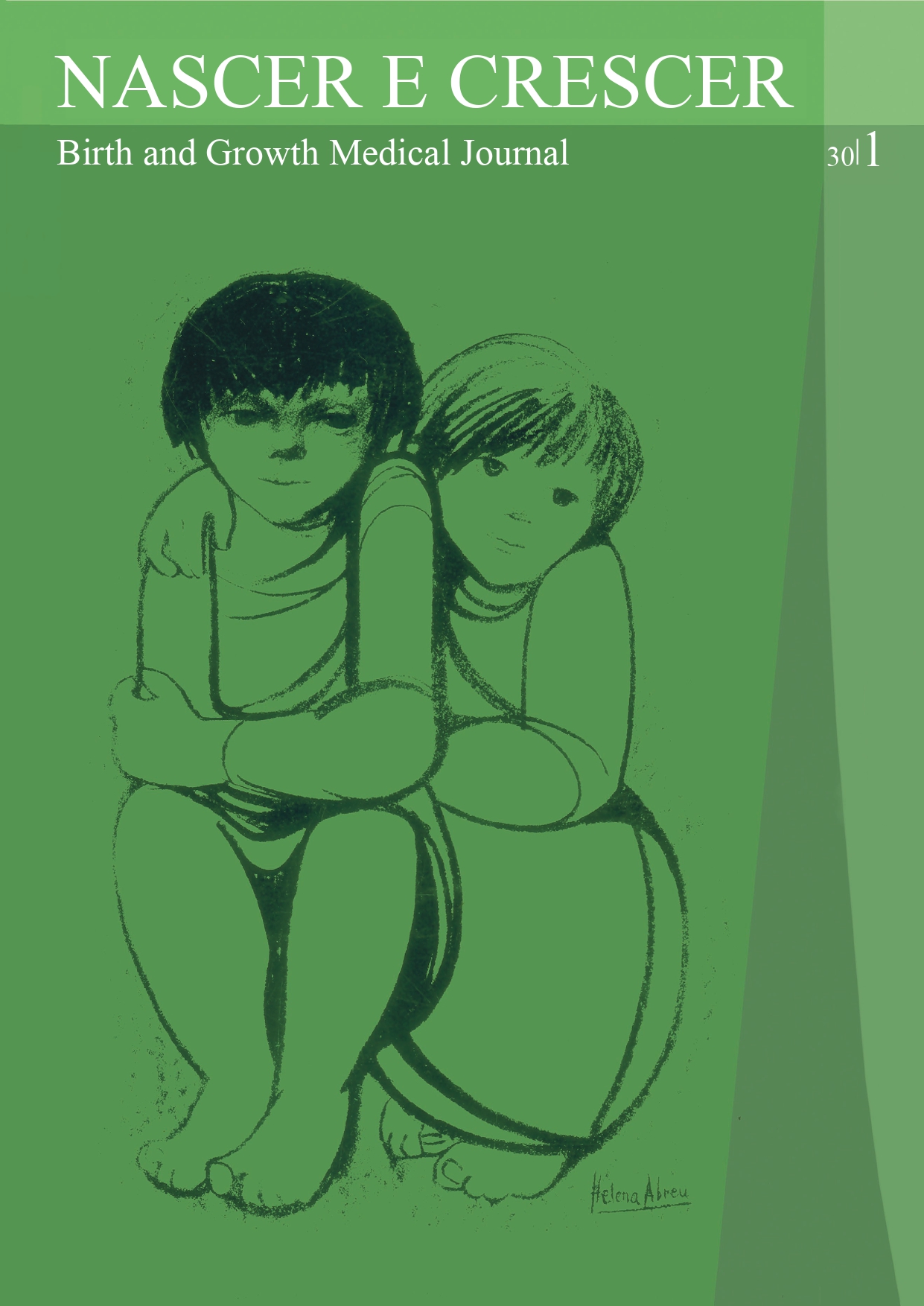Pica and attention deficit hyperactivity disorder: is there a link?
Comorbidity and treatment outcomes with methylphenidate
DOI:
https://doi.org/10.25753/BirthGrowthMJ.v30.i1.18910Keywords:
attention deficit hyperactivity disorder, methylphenidate, pica, treatmentAbstract
Introduction: Pica is the persistent ingestion of non-nutritive substances. It is common during childhood and may be related to nutritional deficits, intellectual disability, stress, and psychosis. However, no causative biological condition is identified in most cases and there is limited evidence to support pharmacological intervention. As several authors describe pica as an impulse control disorder and impulsive symptoms are a core aspect of the diagnostic criteria of attention deficit hyperactivity disorder (ADHD), this study reviews literature data on pica, ADHD, and treatment response during childhood and adolescence and adds two case reports to this body of evidence.
Methods: Systematic literature review using the key terms “pica”, “attention deficit”, “hyperactivity”, “child”, and “adolescent”. A retrospective analysis of clinical data of two patients with pica and ADHD followed at the Child and Adolescent Psychiatry Department of Hospital Pediátrico was also conducted.
Results: As far as the authors are aware, only three cases are currently reported in the literature describing comorbid pica and ADHD in children. Of these, two reported complete pica symptom remission after methylphenidate treatment. Two other cases of children with pica and ADHD observed at the Child and Adolescent Psychiatry Department of our institution were reported in this study, one of which had complete symptom remission after psychostimulant treatment optimization.
Discussion: The suggested association between pica and ADHD may have underlying etiology in poor impulse control and dopaminergic system dysfunctions. Therefore, a pharmacological approach capable of improving dopaminergic functioning may be an alternative treatment for pica. Psychostimulants may improve pica by eliciting an increase in brain dopamine levels and a decrease in impulsivity.
Downloads
References
American Psychiatric Association. Diagnostic and Statistical Manual of Mental Disorders. American Psychiatric Association; 2013.
Leung AKC, Hon KL. Pica: A common condition that is commonly missed - An update review. Curr Pediatr Rev. 2019;15:164-169. https://doi.org/10.2174/1573396315666190313163530
McNaughten B, Bourke T, Thompson A. Fifteen-minute consultation: the child with pica. Archives of disease in childhood - Education & practice edition. 2017; 102:226–9.
McAlpine C, Singh NN. Pica in institutionalized mentally retarded persons. J Ment Defic Res. 1986; 30: 171-8. https://doi.org/10.1111/j.1365-2788.1986.tb01309.x.
Castiglia PT. Pica. Journal of Pediatric Health Care. 1993; 7:174–5.
Miao D, Young SL, Golden CD. A meta-analysis of pica and micronutrient status. American Journal of Human Biology. 2015; 27:84–93.
Hergüner S, Özyıldırım İ, Tanıdır C. Is Pica an eating disorder or an obsessive–compulsive spectrum disorder? Progress in Neuro-Psychopharmacology and Biological Psychiatry. 2008; 32:2010–1.
Gundogar D, Demir SB, Eren I. Is pica in the spectrum of obsessive-compulsive disorders? General Hospital Psychiatry . 2003; 25:293–4.
Swanson JM, Kinsbourne M, Nigg J, Lanphear B, Stefanatos GA, Volkow N, et al. Etiologic subtypes of attention-deficit/hyperactivity disorder: Brain imaging, molecular genetic and environmental factors and the dopamine hypothesis. Neuropsychol Rev. 2007; 17:39-59. https://doi.org/10.1007/s11065-007-9019-9.
Gunes H, Tanidir C, Adaletli H, Uneri OS. Effect of Methylphenidate on Impulsivity in a Child with Pica and Attention Deficit Hyperactivity Disorder. Klinik Psikofarmakoloji Bülteni-Bulletin of Clinical Psychopharmacology. 2016; 26:87–8.
Bell CC. Diagnostic and Statistical Manual of Mental Disorders. JAMA. 1994; 272828-829. https://doi.org/10.1001/jama.1994.03520100096046.
Hergüner S, Hergüner AS. Pica in a child with attention deficit hyperactivity disorder and successful treatment with methylphenidate. Progress in Neuro-Psychopharmacology and Biological Psychiatry. 2010; 34:1155–6.
Gautam P, Bhatia MS, Rathi A. Intellectual Disability and Multiple Co Morbid Psychiatric Disorders in a Child: A Case Repor. J Clin Diagn Res. 2014; 8: WD01–WD02.
World Health Organization. Division of Mental Health. ICD-10 guide for mental retardation. World Health Organization. 1996.
Singh NN, Ellis CR, Crews WD, Singh YN. Does Diminished Dopaminergic Neurotransmission Increase Pica? Journal of Child and Adolescent Psychopharmacology. 1994; 4:93–9.
Erhard Danford D, Huber AM. Eating Dysfunctions in an Institutionalized Mentally Retarded Population. Appetite. 1981; 2:281–92.
Brahm NC, Farmer KC, Brown RC. Pica Episode Reduction Following Initiation of Bupropion in a Developmentally Disabled Adult. Annals of Pharmacotherapy. 2006; 40:2075–6.
Downloads
Published
How to Cite
Issue
Section
License
Copyright (c) 2021 Daniela Cardoso, Luísa Duarte, Vanessa Fonseca Pinto, Teresa Cartaxo

This work is licensed under a Creative Commons Attribution-NonCommercial 4.0 International License.
Copyright and Authors' Rights
All articles published in Nascer e Crescer - Birth and Growth Medical Journal are Open Access and comply with the requirements of funding agencies or academic institutions. For use by third parties, Nascer e Crescer - Birth and Growth Medical Journal adheres to the terms of the Creative Commons License "Attribution - Non-Commercial Use (CC-BY-NC)".
It is the author's responsibility to obtain permission to reproduce figures, tables, etc. from other publications.
Authors must submit a Conflict of Interest statement and an Authorship Form with the submission of the article. An e-mail will be sent to the corresponding author confirming receipt of the manuscript.
Authors are permitted to make their articles available in repositories at their home institutions, provided that they always indicate where the articles were published and adhere to the terms of the Creative Commons license.


